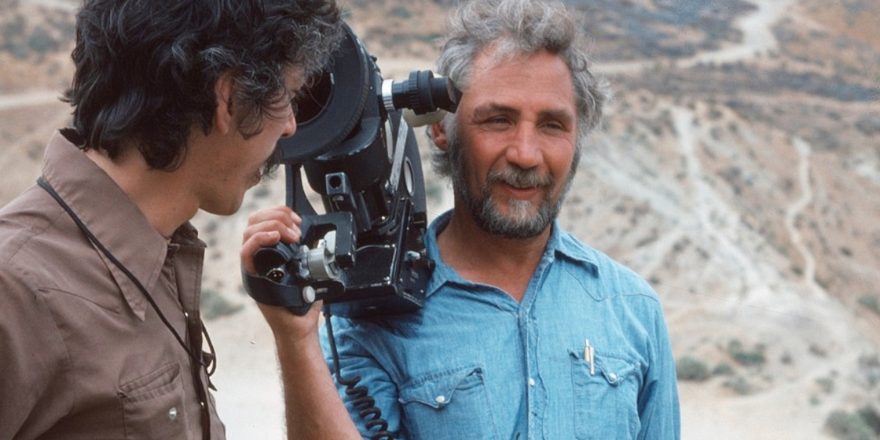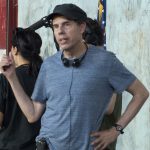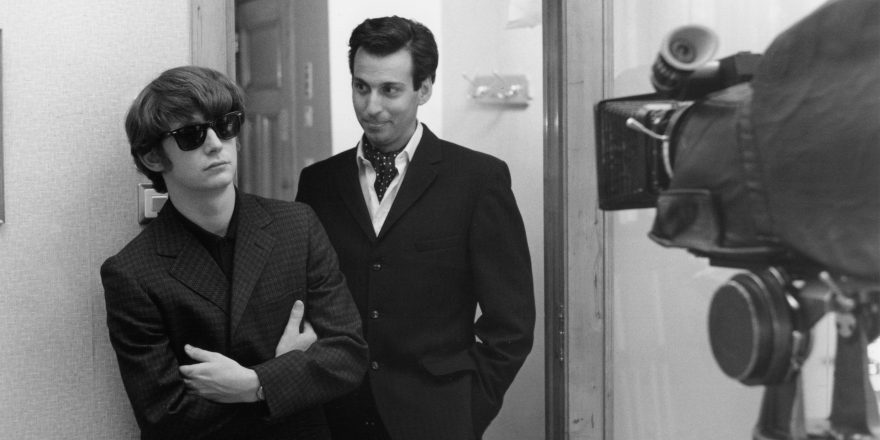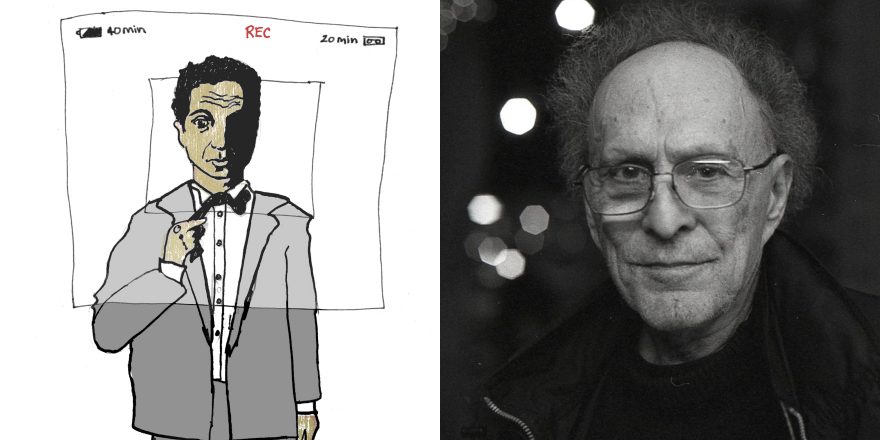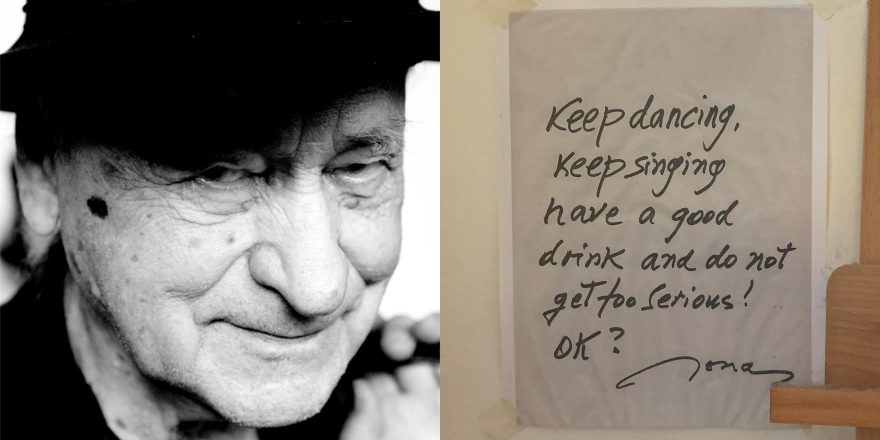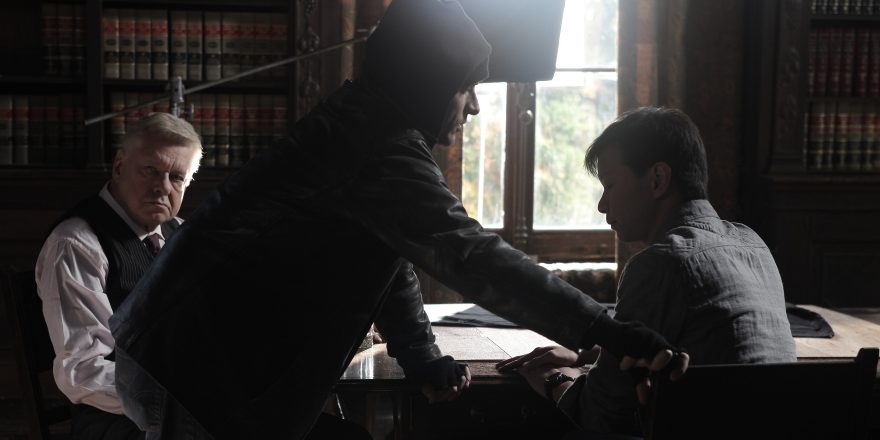Robert M. Young, who died this past February at the age of 99, was a stalwart and unpretentious giant of American filmmaking whose work spanned more than seven decades. Unlike many independents who sought to graduate to bigger budgets and more lucrative careers, sometimes at the cost of their truest voice, Bob remained staunchly independent if the story he was trying to tell demanded it (which was often the case). His filmmaking choices were always motivated by his personal passions, by a desire always to stretch himself in collaboration with others he esteemed, and by the inclination and ability to “indulg[e] his wanderlust,” as his New York Times obituary aptly put it.
From his work in a Navy photographic unit in World War II, to shooting educational documentaries in the 1950s, to his not-uncomplicated relationship with NBC’s acclaimed White Paper series in the 1960s, to the bold 1964 feature Nothing But a Man that he produced, co-wrote and photographed, to the distinctive narrative features that he directed beginning with 1977’s Alambrista!, to his final episode of Battlestar Galactica in 2009, Bob embodied a filmmaking ethos to which many directors like me, who came of age as the curtain was falling on New Hollywood and rising on a vibrant Off-Hollywood scene, aspired.
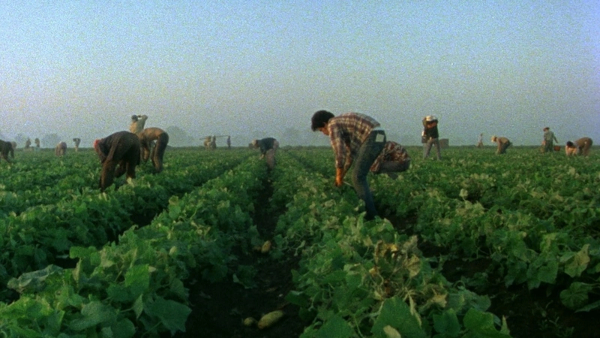
As much as any filmmaker, he embodied for me the aphorism “the longest line’s never outside the best restaurant.” And he did so with a rare generosity of spirit that couldn’t help but uplift you and help you to believe in your own capability. He demonstrated that someone temperamentally unsuited (by his own admission) to the business of moviemaking could nevertheless distinguish himself as a director, and even be courted by that business. He lacked the sort of ego or narcissism that often energizes an artist to find external “success” in either commercial movies or in fine art. He was not confrontational; he was a dispenser of reassurances and hugs, and anyone lucky enough to be on the receiving end knew that he meant them.
It would be a stretch for me to call him a mentor, yet the positive effect he had on me by way of his example was undeniable. That effect has lasted 45 years and I will always be grateful for him.
Much has been written about the American independent scene that took off commercially in the 1990s, after the success of sex, lies, and videotape (which earned 30 times its cost). The ’90s is when I formally began my career as a filmmaker, but in many aspects the previous decade, during which I fumblingly taught myself how to direct feature films amidst the vibrant independent scene that was unfolding, is the more historically fascinating – inasmuch as the slate was still largely unwritten and had yet to be overtaken by broader, mainstream industry forces that later shaped what movies got made.
Robert M. Young did much of his best narrative work during those years. This essay focuses on the five years between Alambrista! (1977) and The Ballad of Gregorio Cortez (1982), a period that also included Short Eyes (1977), Rich Kids (1979) and One Trick Pony (1980).
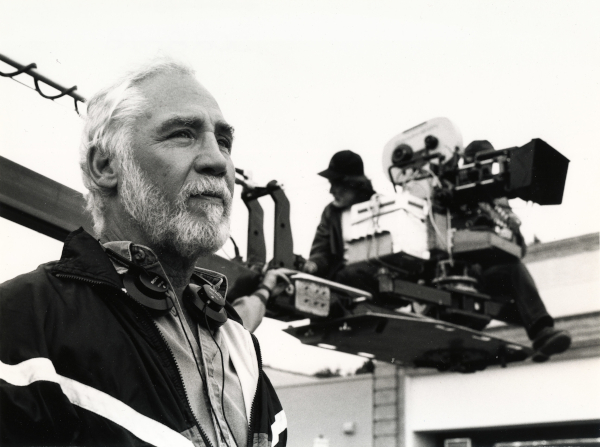
In 1978, I saw Alambrista! for the first time at a public library screening. That year at Cannes, Bob won the very first Camera d’Or prize. His film was a milestone of American neorealism. Like many who saw it during its initial broadcast as part of the PBS Visions series, or in its few theatrical bookings, I was deeply moved by Alambrista!’s realistic portrayal of a migrant farm worker’s plight – a subject to which I was predisposed, owing to my mother’s work in poverty programs in East L.A.’s Chicano community during the 1960s. I had already completed my second 16mm short, about the San Diego Wild Animal Park – a 15-year-old rookie’s imitation of the fine, early National Geographic Society documentaries that I hoped one day to be good enough to make – but had yet to be bitten by the aesthetics of fiction cinema. That changed rapidly after seeing Alambrista!
By virtue of its tiny budget, small crew and documentary style, Alambrista! became for me a powerful model of feature filmmaking that might be within reach. I was further struck by the fact that Bob had previously directed and photographed several of the best classic Geographic specials, made under the aegis of storied producer David Wolper, including Bushmen of the Kalahari and Search for the Great Apes. (For the latter, he accompanied primatologist Biruté Galdikas upriver, deep into Indonesian Borneo, to document her groundbreaking work with orangutans, about which the world had previously known little.)
Jumping forward a year or two, I had completed my first feature-length screenplay while still in high school, and was figuring out how to make it. In 1979 or ’80, the Village Voice ran a full-page article about a new company called First Run Features, which had been founded by several fiction and non-fiction filmmakers who were in need of distribution. In the Voice article, Bob Young appeared in a photo of the group as a kind of godparent or, since most of the others were earlier in their careers, elder statesman. (First Run didn’t survive in its original, undercapitalized incarnation, but was bought in the mid-1980s by lawyer Seymour Wishman, who built it into a successful concern along more conventional lines.)
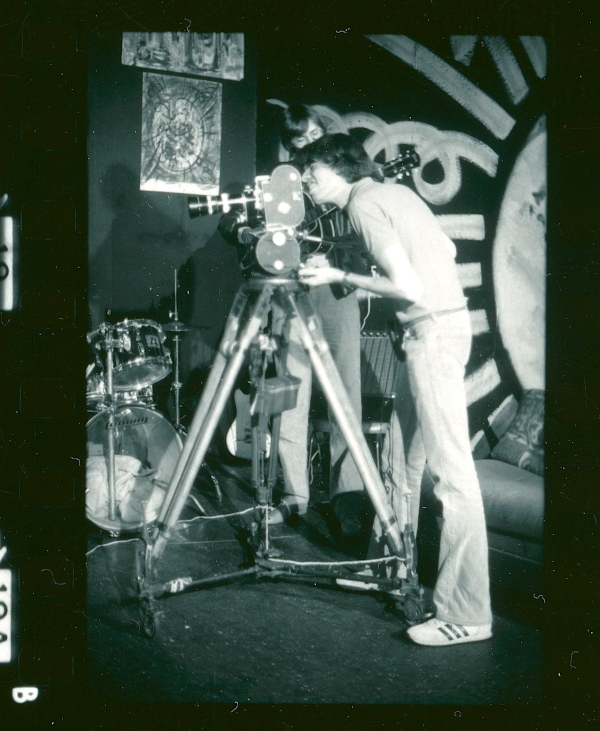
For more than a year, seeking money for the first feature that I was, by then, a bit too impatient to make, I had been courting an investor from Buffalo, a cardiologist who had answered an ad that I had placed in Daily Variety (undoubtedly in violation of multiple securities laws). Our ensuing “development process” consisted of countless early morning phone calls (when rates were cheapest from the West coast). Though I succeeded in bringing him to the trough, what had kept him from finally drinking was the perennial problem of distribution. How would he know that his investment would stand even a chance of recoupment if our movie couldn’t be distributed?
By now living in Boston, and remembering the Voice article of a year earlier, I took a chance and phoned Bob Young to ask his advice. He couldn’t have been more encouraging and made a call on my behalf to Fran Spielman, a legendary figure in arthouse distribution who had been brought out of retirement to manage First Run Features. Overjoyed and appreciative, I was on the next train down to New York, where, in the company’s tiny office, I talked at length with Fran about distribution and moviemaking. She might have taken pity on me – I must have still looked about 15 – or maybe she actually sensed something promising in my script. After reading it, the company’s V.P. Joel Gold generously wrote a note that I could share with my potential investors, saying that if the film lived up to the script, First Run would be interested in distributing it. About as hazy a prospect of distribution as one could imagine, much less take to the bank, but still – something.
Two years later, I had moved to L.A. and was shooting that first feature, albeit without an investment from the cardiologist, on weekends, with a tiny budget that I had begged, borrowed and earned from my job at a script-typing service. The Ballad of Gregorio Cortez was playing at the Fine Arts in Beverly Hills and I ran into Bob Young on the sidewalk outside the theatre, where he and the film’s star, Edward James Olmos, were greeting patrons. I was thrilled to meet Bob in person and to have a chance to thank him for his encouragement and advice in getting my ill-fated picture off the ground. He was excited about the grassroots efforts that he and Olmos were undertaking to get Gregorio Cortez seen theatrically. I wished him well and vowed to keep in touch.
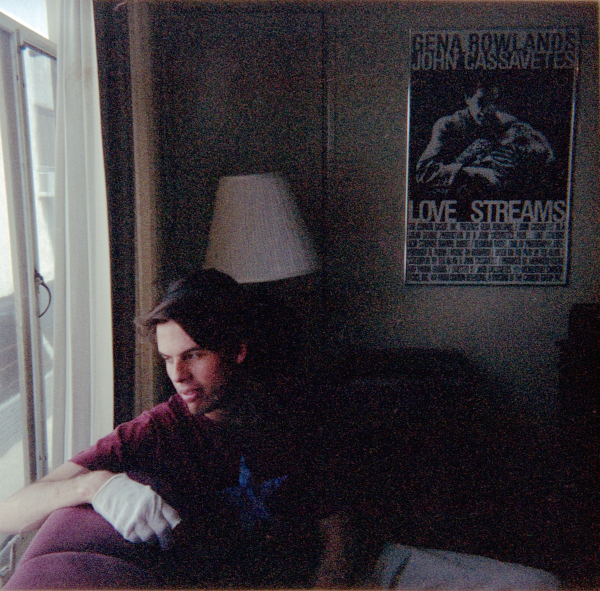
1986. (Photo courtesy Christopher Munch.)
About a year after that, despite the heroic efforts of a few good actors and my ceaseless hacking away at clunky footage, I realized that my first feature was irredeemable, and abandoned it before I’d completed a fine cut of it. (Ten years after that, I destroyed every last bit of workprint, sound and negative that it had spawned.) In 1984, I began another self-financed, microbudget feature, with the benefit of all I had learned from my practical mistakes but, once again, without proper script development. In contrast to the sprawl of the previous story, it was more focused, made with two good actors and a crew of four; again, I shot it myself on cheap short-ends bought from a studio. But after one showing at the Independent Feature Market in 1987, it never saw the light of day – thankfully, in hindsight, given that it lacked not only exploitable commercial elements, but also artistic ones that could gain it festival play. Like the previous exercise, though, it helped to give me the foundation that I needed to begin to do good work. And this time, I didn’t have to destroy the negative myself; the lab did it for me when it went out of business a few years later.
Robert M. Young continued to make narrative features at a brisk clip, closing out the decade with Extremities (1986, garnering much attention for Farrah Fawcett), Saving Grace (1986), We Are the Children (a 1987 TV movie), Dominick and Eugene (1988) and Triumph of the Spirit (1989, his biggest budget movie to date). Over the next two decades, I would run into him from time to time at DGA functions. In addition to network television directing, he continued to make features – I saw him at Sundance in 2004, when he showed Human Error (aka Below the Belt), a born-digital picture that featured innovative visual effects but went undistributed. He even directed an IMAX film, The Giant Panda Adventure, in 2001. (Twenty-five years earlier, he had collaborated with another early filmmaking idol of mine, the surfing and aerial cinematographer Greg MacGillivray, on the script of the landmark IMAX short To Fly.)
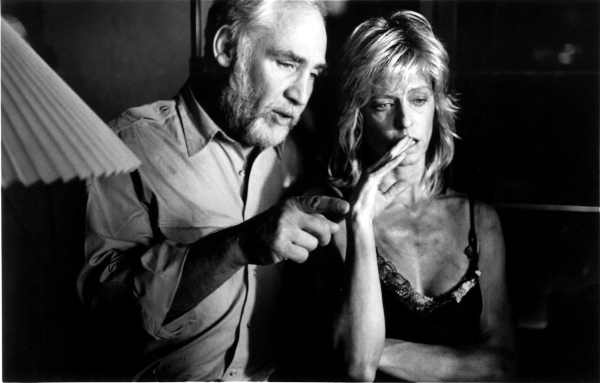
The last time I saw Bob was around 2010. A few years earlier, he had issued a new scan of Alambrista! on a DVD that came packaged with an academic book written by his friends Nicholas J. Cull and Davíd Carrasco. (This was the first time the film had been made available on home video; in all the previous years since its release, you could see it only by borrowing a print from Bob himself or purchasing an institutional copy.) He had made some edits to the movie and considered the new version his “director’s cut.” It featured a large amount of new music – a bit of a shock to those of us who knew the original movie’s understated score. He told me that the project was something of a work-in-progress. When Criterion later put out a new home video edition, though, I was surprised to find he had not included the original soundtrack as an alternate version.
More recently I wondered if Bob’s decision, in his 70s, to recut Alambrista! to include more humor and a more lively score was somehow a reflection of how he had evolved later in life – or simply a desire, like David Lean – who didn’t effectively fine-cut Lawrence of Arabia until nearly 30 years after it was first released – to invest the time and care that his original post-production schedule didn’t allow (the director commentary suggests the latter). I never had the chance to ask him.
His 2005 oral history for the Directors Guild reveals an essential correspondence between his love of the indigenous cultures he captured in his documentaries and an unswerving commitment to the psychological reality of his fictional characters. “They made me Eskimo clothing, I lived like an Eskimo, I ate their food and it was 60 below zero,” he recalled of shooting The Eskimo: Fight for Life. “I’m a hunter. I go out with the camera just the way they stalk game, and I don’t make any apologies about it. … I step in between people and I explode things and then I put it back together again, analogically.” And the same, of course, can be said for his narrative movies – the “putting back together again, analogically.” In the case of 1977’s Short Eyes, a potent adaptation of the play that Miguel Piñero wrote in 1974 while serving time in Sing Sing, Bob Young was recruited on short notice to replace another director. “They’d shot for five days – and they [the inmate actors] told the [original] director if he came back on Monday, they’d kill him. And they meant it.” Rewriting the film’s screenplay with Piñero under pressure of time and Piñero’s dope habit, Bob spent weekends during the shoot locked in the Tombs (Men’s House of Detention) in New York City, where the production was being filmed. Its authenticity has never been surpassed.
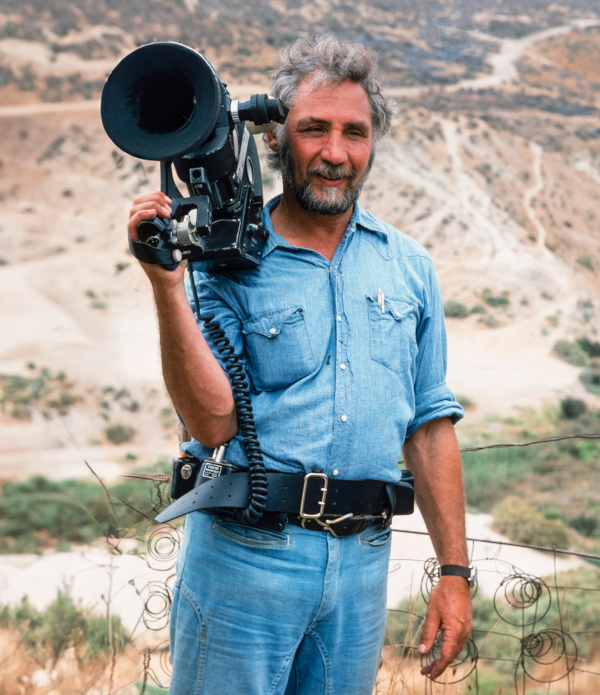
That authenticity – and the film’s nuance of character and performance – would likely have been impossible without the agility of muscles Bob Young had already developed as a documentarian while making 1960’s Sit-In, 1961’s Angola: Journey to the War and 1973’s Children of the Fields, among others. (Those muscles were apparently more than NBC could handle in 1962, when it shelved Cortile Cascino, about life in a Sicilian slum – a film that only saw the light of day 30 years later when Andrew Young, Bob’s son, and Susan Todd incorporated it into their Oscar-nominated documentary Children of Fate.)
What perhaps most resonated for me about how Bob lived his life and made his art, in a field often dominated by the pursuit of flash over the pursuit of light, was that his conditions of satisfaction were his own. He defined them and brought them about. No matter whether he always came up batting a thousand (who does?), I have no doubt that each of his films was a unique journey of discovery for him in the most personal of terms. And in that way I feel a profound kinship with him. Each of his works was not only a reflection of the zeitgeist of the times in which it was made, but also, as if through a prism, a refraction of it – through his sensibilities, his skill, his values, his essential humanism. Sure, any true work of art aspires to that condition, even if in commercial moviemaking that aspiration often gets diluted by other factors. What is lasting and rich about Bob’s movies is the rare degree to which who he was as a human found its way, through various guises and subjects, through the amorphous boundaries of fiction and non-fiction, onto the screen undiluted.
Featured image, showing Robert M. Young with Tom Hurwitz ASC on the set of Alambrista!, courtesy of Andrew Young.



